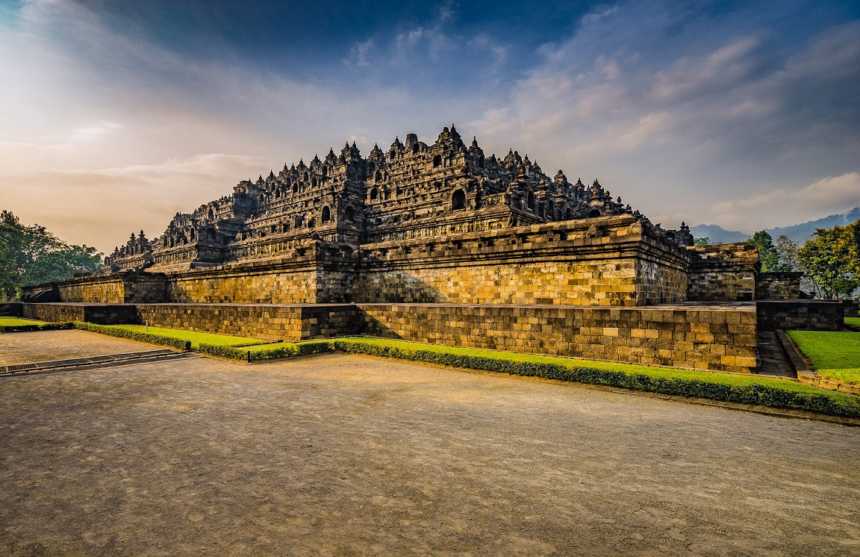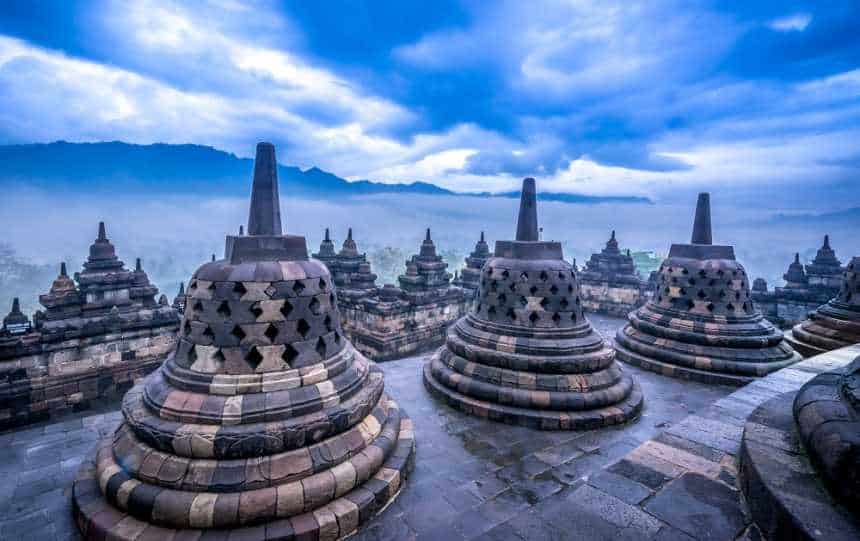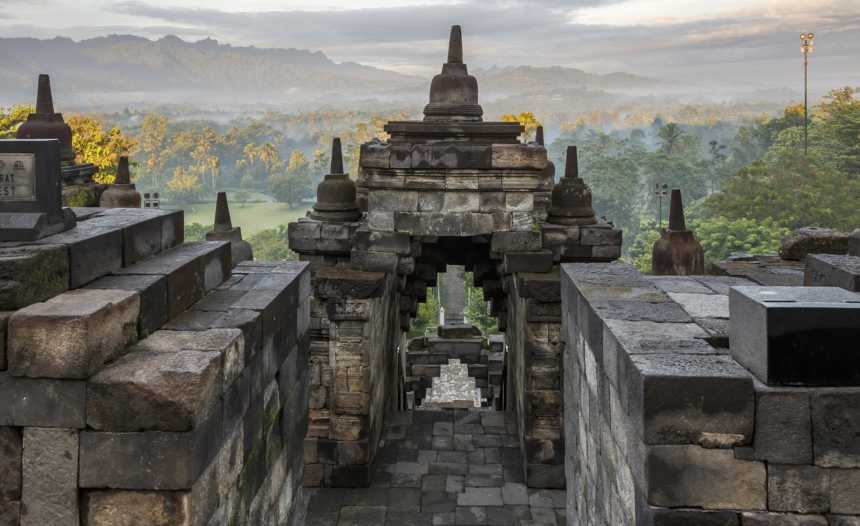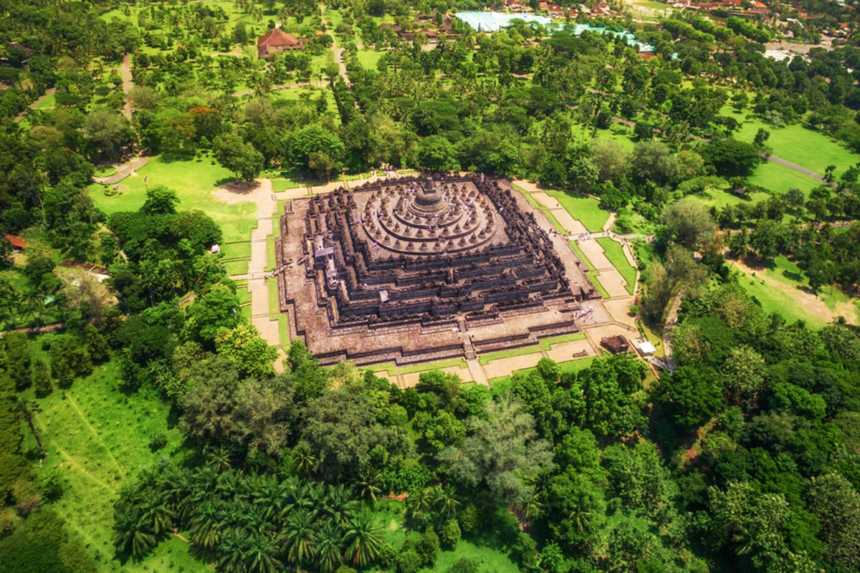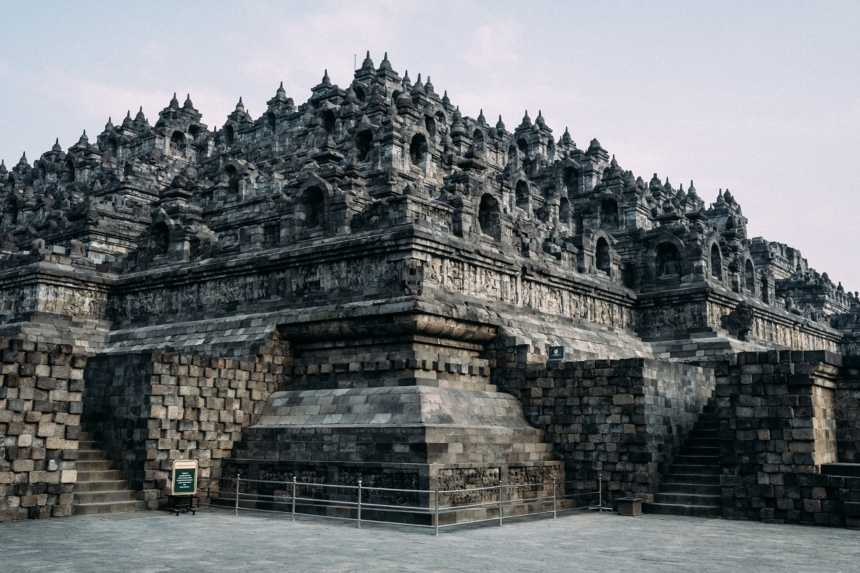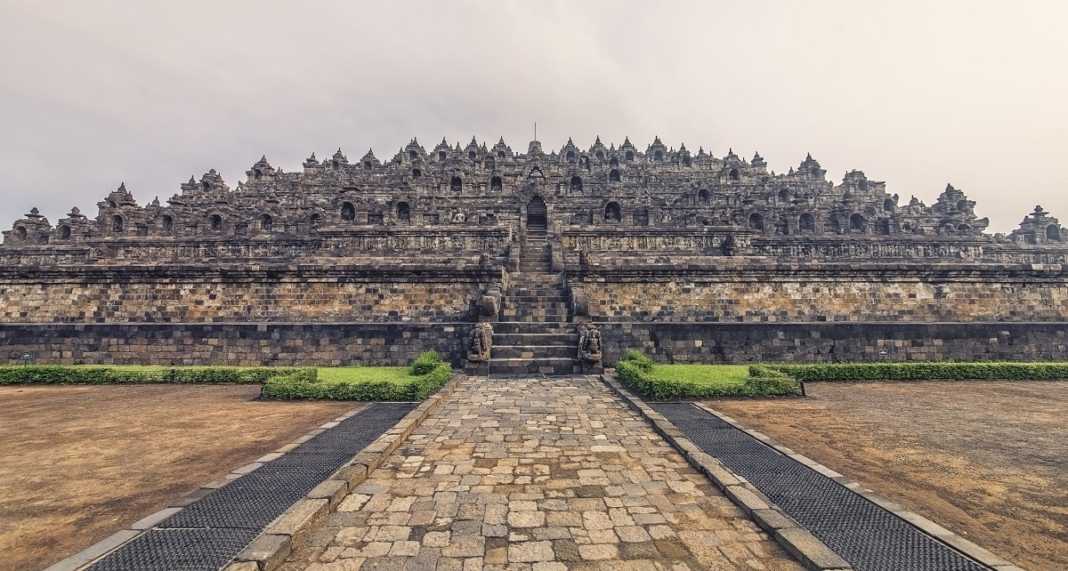Buddhism is one of India’s most successful exports. The religion developed in the Indian subcontinent, and over time spread across nearly all of Asia. That’s pretty common knowledge, but did you know where Buddhism went first? After leaving India, one of the first places to adopt Buddhism wasn’t in China or Japan – it was Indonesia.
As a result, Indonesia has some of the oldest Buddhist monuments in Asia, as well as some of the most spectacular. The crown jewel of these is the Borobudur Temple, located in central Java. Not only is it a stunning example of traditional Indonesian architecture, it’s also the largest Buddhist monument and tallest Buddhist stupa in the world. Partially excavated Kesaria Stupa in India, which measures At 104 ft (32m) is second tallest stupa.
History of the Borobudur Temple
The story of the Borobudur Temple begins with the Shailendra Dynasty. This ruling family concentrated their power in central Java in the 8th century CE, and grew to control all of Java and parts of Sumatra. Some scholars think that the Shailendra came to Indonesia from India, while others think they were native to the island. Regardless, they clearly had some cultural connections to India and were major proponents of Mahayana Buddhism, which they actively spread across Indonesia.
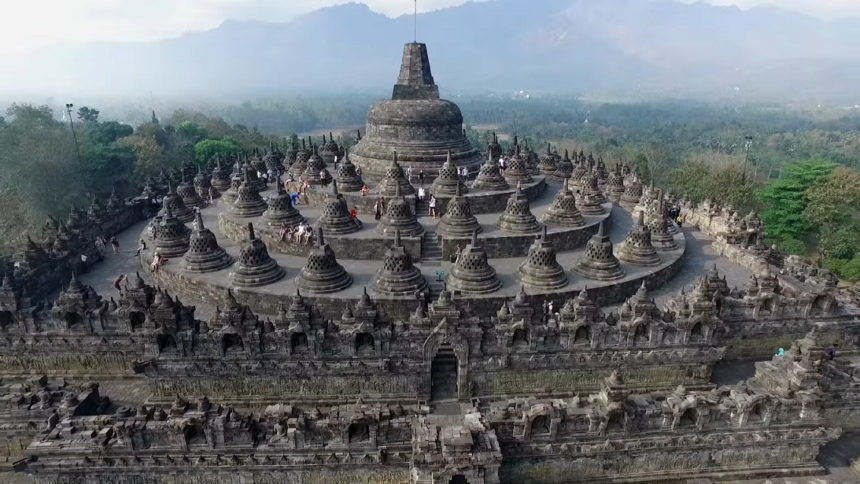
Their biggest achievement was the Borobudur Temple, which was built over roughly 1,200 years from the 8th through 9th centuries. The builders carted two million stones from local rivers and streams and fit them tightly together without the aid of mortar to create a 114-foot-high (35-meter-high) step pyramid. Together they make up the greatest assemblage of such Buddhist sculpture in the world.
Candi Borobudur’s design was conceived of by the poet, thinker, and architect Gunadharma, considered by many today to be a man of great vision and devotion. It has been estimated that Borobudur was a building project on such a scale that it took many generations to complete the artificial stone mountain.
For centuries, Borobudur was a major pilgrimage site, attracting the faithful from as far away as India and China. But Borobudur was mysteriously abandoned by the 1500s, when the center of Javan life shifted to the East and Islam arrived on the island in the 13th and 14th centuries. Eruptions deposited volcanic ash on the site and the lush vegetation of Java took root on the largely forgotten site. It remained lost for roughly 400 years before the colonial governor of British Java decided to have it excavated.
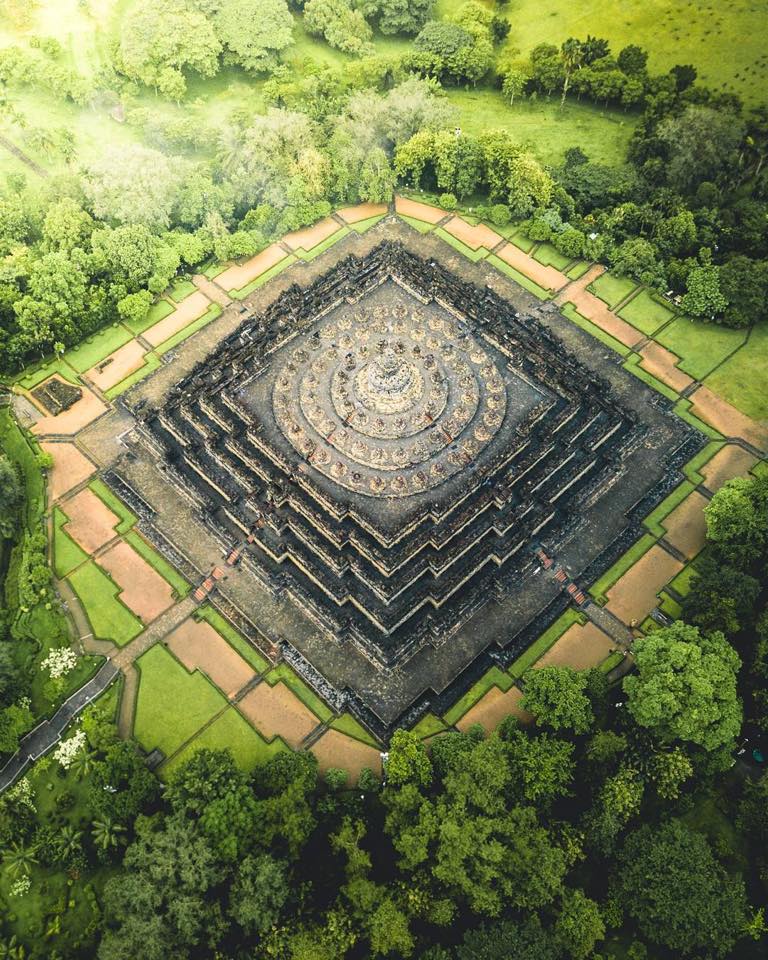
The Temple Complex
So, what makes Borobudur so special? The complex itself is very impressive, and noted particularly for an immense amount of artwork. The entire site contains 504 statues of the Buddha. 1460 stone reliefs on the walls and opposite balustrades decorate the first four galleries, with an additional 1212 decorative reliefs augmenting the path. In fact, there are roughly 2,520 square meters of reliefs at Borobudur. That means that if you took all these reliefs off the walls and laid them out, you could completely cover half of a football field.
Aside from its extensive artwork, Borobudur is also notable for the intricate symbolism of its architecture. Borobudur is built in the shape of a gigantic mandala-yantra that is meant to be walked by a pilgrim seeking enlightenment. The temple is built in three tiers, each individually representing a sphere of the cosmic path to nirvana, while collectively representing the physical journey to achieve it. First is the base, which is the step pyramid made of five concentric square terraces. That’s where most of the height of the complex comes from. Sitting on that is a conical base with three circular platforms and 72 openwork stupas (individual Buddhist temples or shrines), each one containing a statue of the Buddha. At the very top is the monumental stupa, the ultimate temple to the Buddha.

This layout makes Borobudur look impressive, but there’s a much deeper meaning. In Mahayana Buddhism, the Universe can be seen as three superimposed spheres. The base sphere is kamadhuta, the sphere of desire where we are bound to our attachments. That’s the base tier of the temple. The second sphere is rupadhatu, the sphere of forms. This is where we learn to abandon our desires, but retain our physical forms. That sphere is represented by the pyramid terraces, three platforms, and conical base. Finally you have the sphere arupadhatu, the sphere of formlessness in which nirvana is achieved. The name and form of the body are abandoned. This is represented in the monumental stupa, the pinnacle of the temple.
If the journey towards nirvana seems intimidating, it should. In Mahyana Buddhism, it’s often represented as a mountain. Every step brings you closer towards the peak, the concentrated and defined goal. That explains the overall shape of Borobudur as well. It’s meant to look like a mountain. You start with a wide base, and as you climb the temple you are exposed to more Buddhist teachings, refining your spiritual quest until you reach the pinnacle. It’s a metaphor so elaborate that you have to physically engage with it in order for it to truly sink in. How’s that for some impressive architecture?
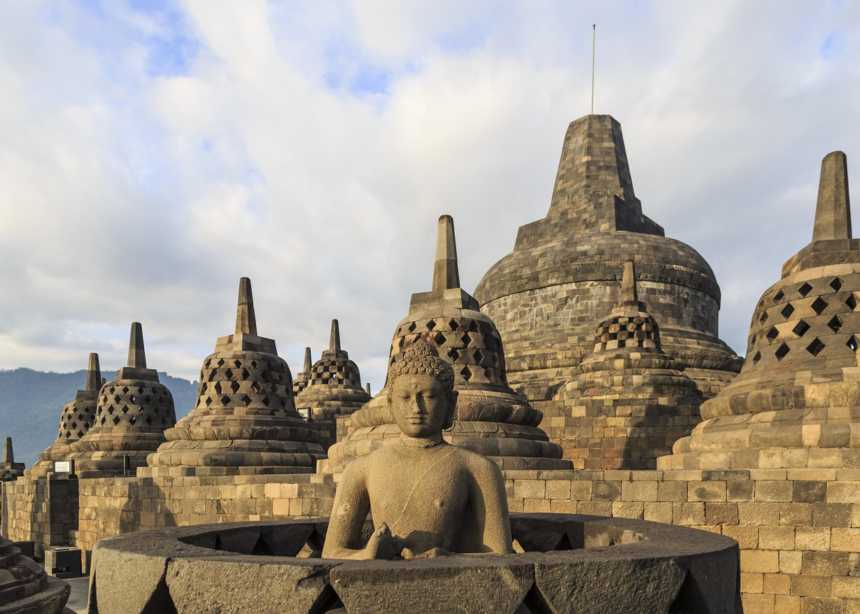
Climbing Borobudur is a pilgrimage in itself, meant to be experienced physically and spiritually according to the tenets of Mahayana Buddhism. As the faithful climb upward from level to level, they are guided by the stories and wisdom of the bas-reliefs from one symbolic plane of consciousness to the next, higher level on the journey to enlightenment.
Rediscovery & Restoration of Borobudur
In the early 19th century Sir Thomas Stamford Raffles, British governor of Java, heard of the site and took an interest in having it excavated. While this process revealed Borobudur’s treasures it also triggered a process of decay by exposing them to the elements. Villagers liberated stones for building materials, and collectors removed Buddha heads and other treasures for private and public collections around the world.
Finally, in the 1960s a massive campaign was launched by the Indonesian government and UNESCO to save and restore the site. The massive monument’s lower terraces were dismantled and their priceless relief panels were cleaned and treated against weathering. Statues were taken out of private collections, stones were returned, and piece-by-piece Borobudur was cleaned and rebuilt. Over eight years a million stones were removed and later reassembled.
The result is that Borobudur remains today what it was 1,200 years ago—a unique treasure to rival any site in Southeast Asia. It is currently a UNESCO World Heritage Site and a stunning example of Indonesian architecture, but it has also reclaimed its role as a Buddhist pilgrimage site.

